Contents
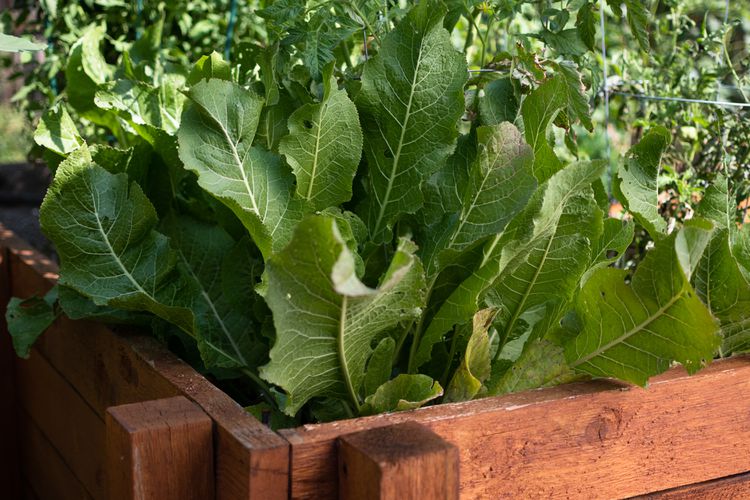
Horseradish is a perennial plant that grows in clusters and is classified as both a vegetable and an herb. Its strong, yellowish-white roots are mainly cultivated for their ability to enhance the flavor of numerous dishes. This plant thrives in full sunlight and prefers soil that drains well.
The plant showcases elongated, glossy, serrated, deep green foliage, and during the summer, it produces small, white flowers with four petals arranged in clusters. Typically, horseradish is sown in the spring, and it rapidly develops, allowing the roots to be harvested by the fall.
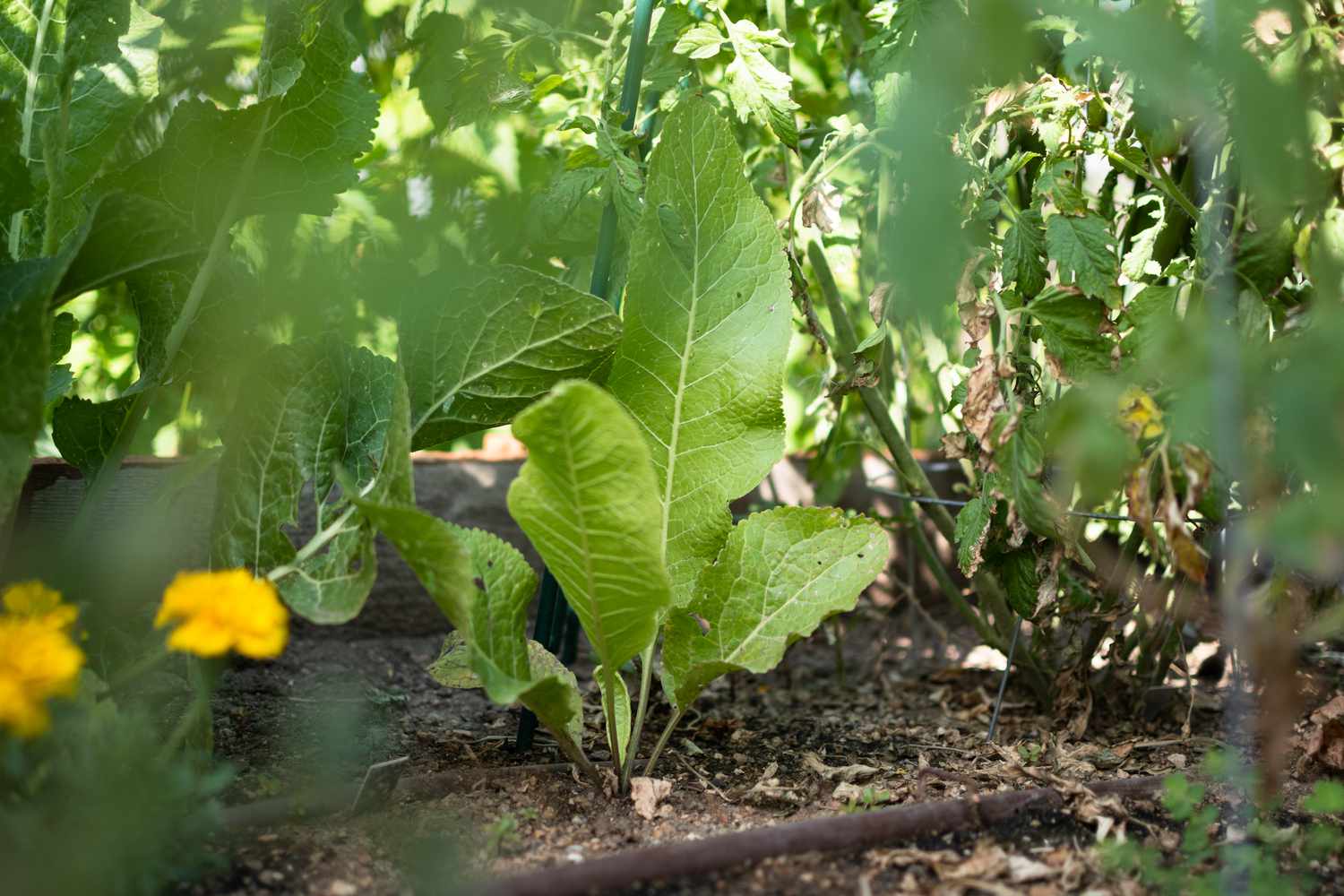
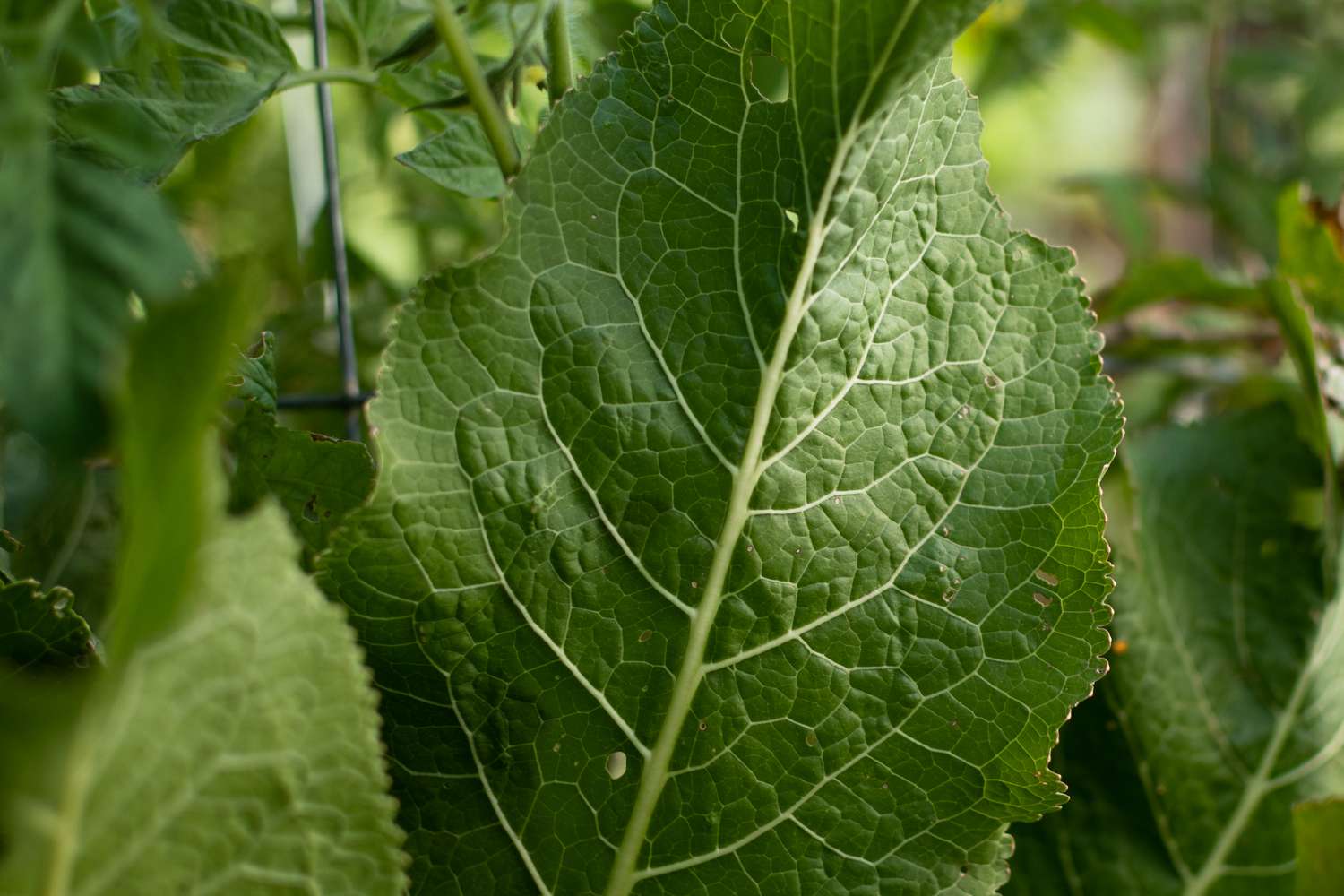
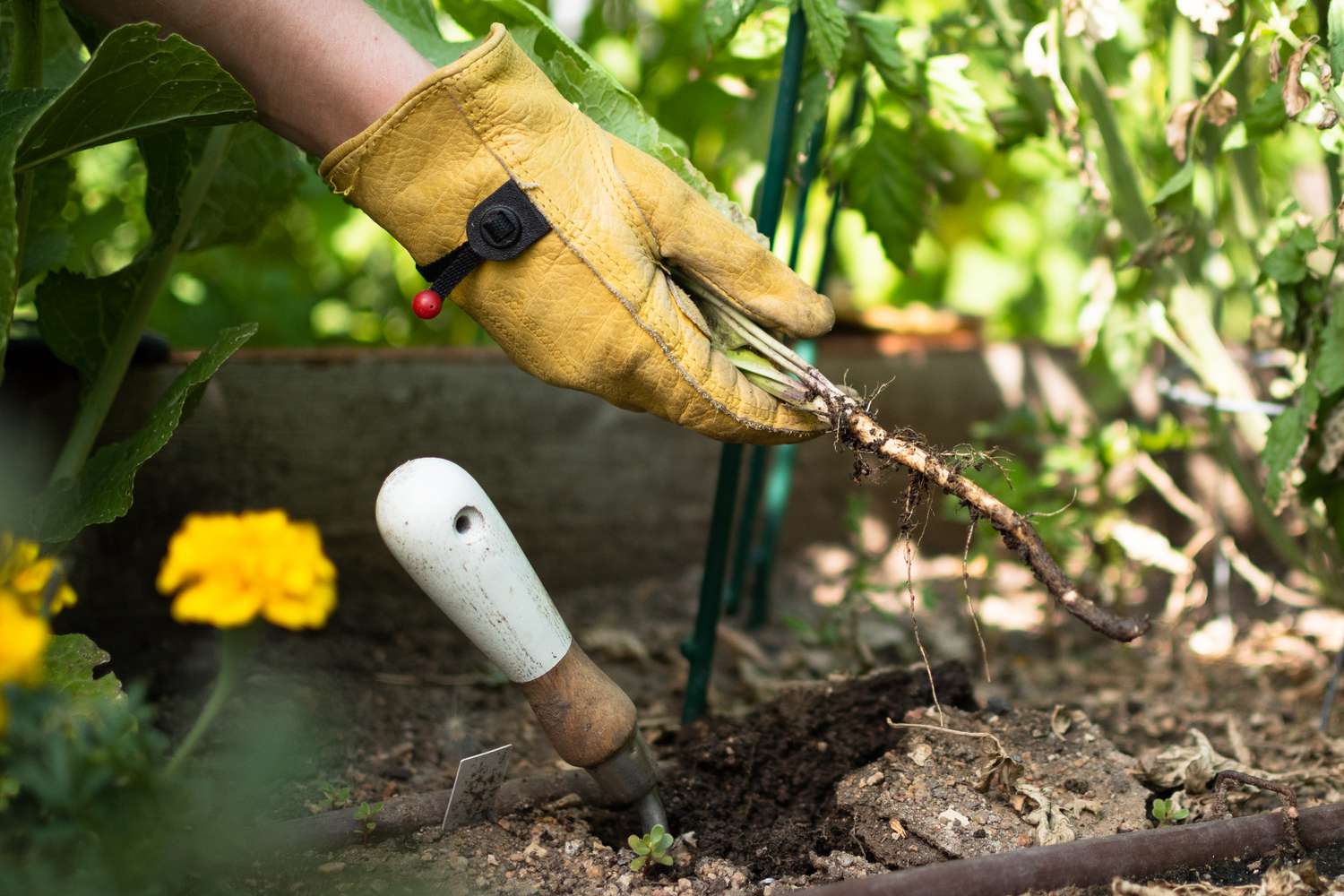
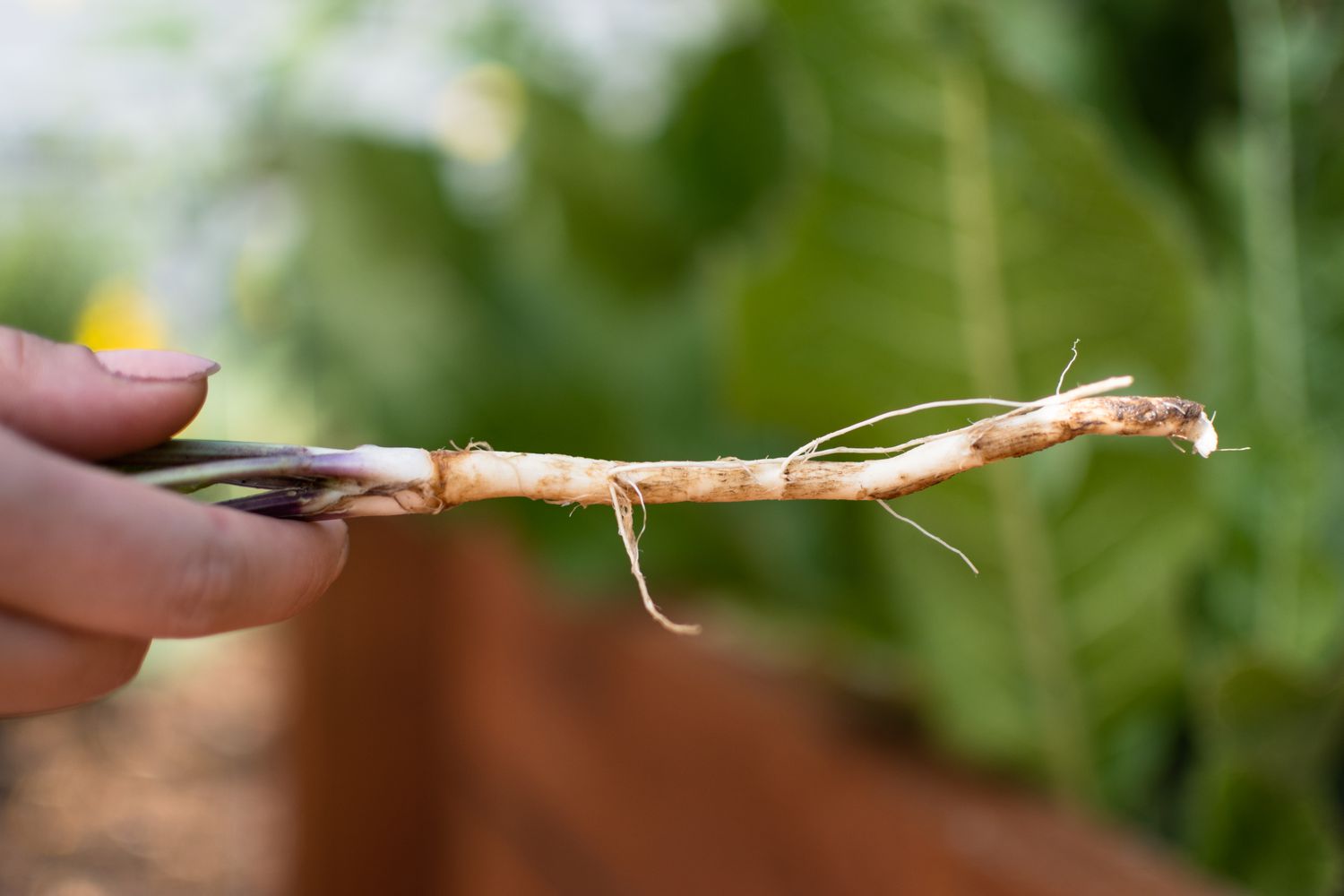
Varieties of Horseradish
The selection of horseradish varieties is quite restricted. The most prevalent type is common horseradish (Armoracia rusticana), which is likely the only one available. Additionally, there is the ornamental variant, Armoracia rusticana ‘Variegata,’ known for its marbled foliage. This ‘Variegata’ type is generally less aggressive in growth and shows greater shade tolerance.
Collecting Horseradish
The optimal period for harvesting horseradish is during the autumn months. Following one or two frosts, the roots become easier to handle.
Excavate a pit approximately one to two feet deep adjacent to the plant. If you’re dealing with a row of horseradish, create a trench rather than a single hole. On the opposite side of the pit, utilize a shovel or a comparable tool to loosen the plant. Gently pull the above-ground section of the plant to the side to extract it from the earth.
Remove any dirt from the roots. Wrap the horseradish root you plan to process shortly in plastic wrap and keep it in the refrigerator. For the remaining roots, place them in a cool location, such as a basement, and keep them away from direct sunlight.
Pruning
As the horseradish plant begins to develop, it produces several shoots. Each of these shoots is developing tiny roots and drawing energy from the main plant.
To obtain a single large root similar to those found in stores, eliminate all but one or two of the shoots to enable them to develop more fully. The downside of this approach is that you will have fewer small roots available for propagating your plant.
Methods for Propagating Horseradish
The most prevalent method for propagating horseradish is through the use of root cuttings. This approach is not only cost-effective for generating new plants but also helps utilize any surplus roots that are not consumed. When you gather your horseradish roots in the autumn, you can set aside the cuttings. Here’s the process:
- When harvesting horseradish roots, choose side roots that measure a minimum of 8 inches in length.
- Trim the tops flat and the bottoms at an angle, ensuring you can easily identify which end should be planted in the ground.
- Remove any debris from the cuttings and allow them to dry thoroughly.
- Keep them in damp sand or sawdust within a cool root cellar, ensuring they are shielded from light.
- Transplant them in the spring when the soil is suitable for working.
An alternative approach is to allow these lateral roots to remain in the soil throughout the winter. Nevertheless, this may lead to a vigorous expansion in the garden.
Growing Horseradish from Seeds: A Step-by-Step Guide
Horseradish is rarely cultivated from seeds due to the limited growing season in many locations. In most parts of the United States, it does not generate seeds. However, it is feasible to buy seeds to start indoors in January or February, and then move the seedlings outside in April.
- Sow seeds at a depth of approximately 1/4 to 1/2 inch in a damp seed-starting medium.
- Utilize eco-friendly pots that can be directly planted into the soil, minimizing disruption to the root system.
- Maintain the soil’s moisture without making it waterlogged, and you can expect to see sprouts within one to two weeks.
Transplanting and Replanting Horseradish
If you’re concerned about horseradish spreading throughout your garden, consider cultivating it in a container instead. Opt for a large container that is at least 30 inches deep to accommodate the root growth.
Choose a high-quality, loose, and organic potting mix for horseradish, preferably one designed for vegetable cultivation. It’s advisable to select a container that accommodates the full size of the horseradish plant from the beginning, as transferring it to a new pot later can disrupt its root development.
It is essential to have drainage holes in the container, and using unglazed clay is advisable to facilitate the release of excess moisture from the soil through the container’s walls. When planting, position the roots as you would in the ground. Water the plant when the top 1 to 2 inches of soil become dry, and apply fertilizer on a monthly basis.
Overwintering
If you cultivate horseradish as a yearly crop and plan to harvest all its roots for consumption, you don’t need to be concerned about wintering. However, if you wish to propagate the plants, you can either store the roots in a root cellar or leave them in the soil. In colder regions, it’s advisable to apply a generous layer of mulch over the roots for added protection.
Frequent Insects and Plant Illnesses
While horseradish roots are relatively pest-resistant, its leaves are susceptible to various insects, such as aphids, flea beetles, and cabbage worms. To safeguard horseradish from these threats, consider using garden netting and neem oil. Additionally, it’s advisable to plant horseradish separately from other members of the Brassicaceae family, as they tend to attract the same pests.
While diseases are uncommon, root rot may develop in overly wet environments. It’s important to use well-draining soil and to refrain from excessive watering.
Frequent Challenges in Cultivation
Leaves Turning Yellow
When the leaves of a horseradish plant start to turn yellow, it typically indicates that the roots are experiencing stress or rot, often a result of excessive watering. Since this plant prefers drier conditions, it’s important to monitor the soil moisture frequently and reduce watering if needed.
Wilting Foliage
Wilting leaves may signal a potassium deficiency. If your water levels are appropriate and the roots appear healthy, consider using a fertilizer that is high in potassium.
Is it simple to cultivate horseradish?
Horseradish thrives robustly in the garden and requires minimal maintenance, provided it receives adequate sunlight, water, and nutrients.
What is the time required for horseradish to grow?
Horseradish that is planted in the spring is usually ready to be harvested by October or November.
Does horseradish return annually?
Horseradish is a perennial plant, and if it remains in the soil, its roots tend to produce new plants annually.


 Tips for Cultivating and Maintaining Firebush
Tips for Cultivating and Maintaining Firebush Creating a Soaker Hose from a Used Garden Hose
Creating a Soaker Hose from a Used Garden Hose Indoor Gardening Solutions: Limitless Plant Opportunities
Indoor Gardening Solutions: Limitless Plant Opportunities